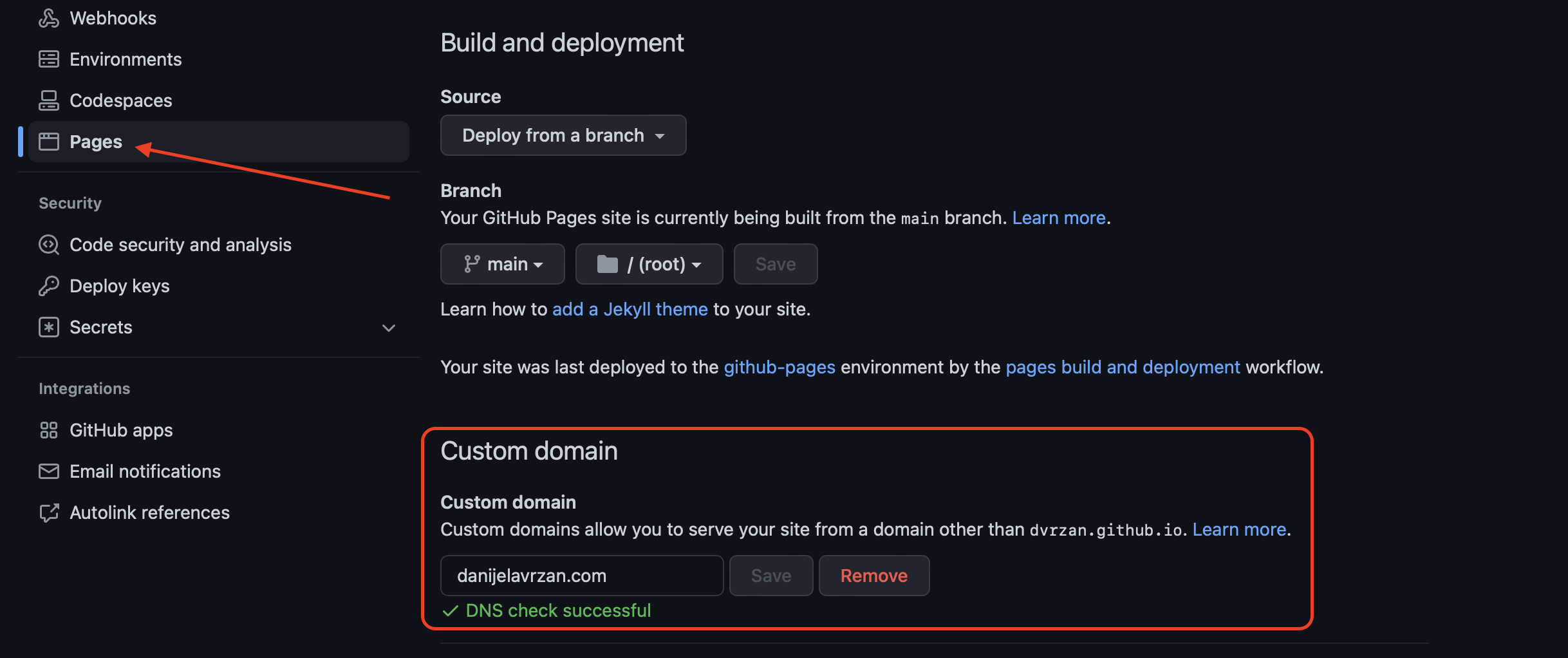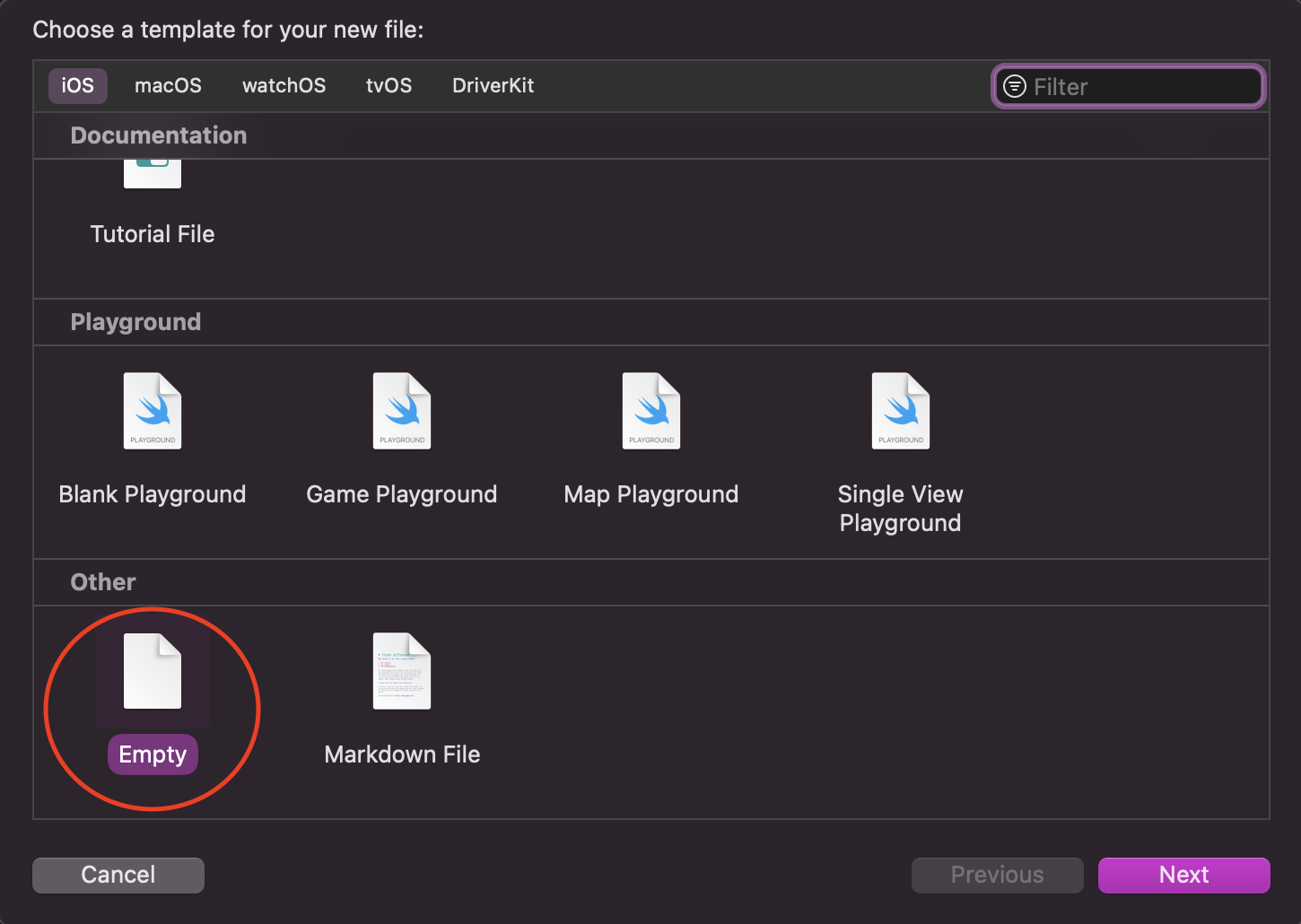Publish: Persist CNAME record when deploying with GitHub Pages
If you want to learn how to deploy your website on GitHub Pages, check the Publish: Deploying your website on GitHub Pages post. Or if you're looking to get started using Publish, check the How to Create a Personal Website in Swift using Publish post.
So you bought a shiny new domain and deployed your website on GitHub Pages for the world to see. Everything works as expected, until a friend of yours messages you about a typo in the about me section and you stumble fast to deploy a fix.
However, after deploying your website again, it's not working. Uh-oh. You try to revert the changes you made, to the state where everything worked, but that doesn't fix the issue.
Custom Domain on GitHub Pages
This post won't go into details about creating or setting up custom domains. I assume you already have one and it's set up to use. Check this article if you want to learn more about Custom Domains and GitHub Pages.
When you set up your custom domain for the first time, it works like a charm. However, any other subsequent deployment overwrites the setup. Your website stops working on amazingdeveloper.com and reverts back to using the default yourUsername.github.io domain.
Then you realize after deploying your website with publish deploy, the Output folder gets overwritten and the CNAME record that was added manually through GitHub gets deleted. Your website no longer uses your custom domain, but reverts back to a default one.
A Canonical Name record (or CNAME record) is a resource record in the Domain Name System (DNS) that maps one domain name (an alias) to another (the canonical name).
There's a section in GitHub Docs under CNAME Errors that explains how some static site generators work:
"For your site to render at the correct domain, make sure your CNAME file still exists in the repository. For example, many static site generators force push to your repository, which can overwrite the CNAME file that was added to your repository when you configured your custom domain."
Quick Fix on GitHub
You can fix this quickly by opening your repository on GitHub and going to Pages section. Under Custom domain, add the missing domain:

When you add your custom domain, GitHub automatically adds a CNAME record to the root of your Output folder.
While this does fix the issue, it's not a permanent solution. You'd have to do it manually every time you deploy a new change to your website.
And there's a better solution.
Add CNAME to Resources
You can't persist the CNAME record on the GitHub repository itself, because Publish force pushes and overwrites the content. You can't add it to the Output folder in Xcode either, because when Xcode runs the build, it overwrittes the content of the folder every time as well. If you try adding it, when you run the build, it will get deleted.
But, there is a way to persist the file on every build and make sure it gets pushed to your repository on every deployment. You need to add the CNAME record to the Resources folder. And you only need to do this once.
One of the publishing steps in the publishing pipeline in main.swift file is called .copyResources(). Inspecting this method, tells us its purpose is to "copy the website's main resources into its output folder". Exactly what we need.
In Xcode, create a new Empty file and add it to the root of your Resources folder. Rename it to CNAME. Make sure to name it exactly like that, all uppercase, or it won't work:

Then, add your custom domain on the first line, in the format of domainname.com.
Now every time you run the build in Xcode, the content of the Resources folder is copied to the Output folder, including your new CNAME file.
When you deploy your website, the file will push to your website's repository and GitHub will persist your domain on every deployment. Much better than doing it manually every time.
Final Thoughts
I hope this small tip improves your experience working with Publish and GitHub Pages.
GitHub Pages are easy to set up and Publish has a built-in deployment method for it. It's more than enough to use for personal websites that might not change in content, or small blogs. And it's free!
Please feel free to reach out on Twitter if you have any questions, comments, or feedback.
Thank you for reading and happy coding!
